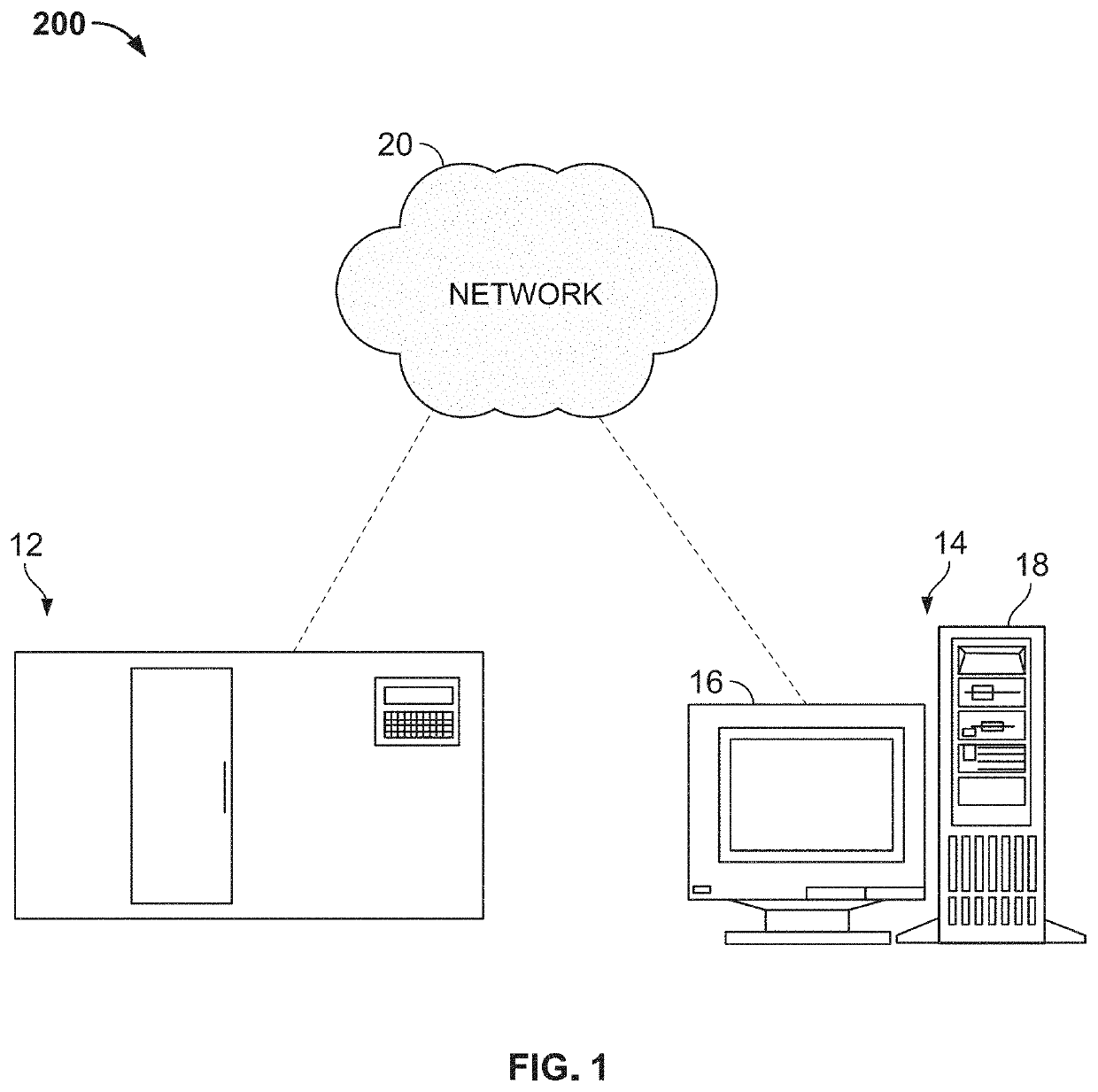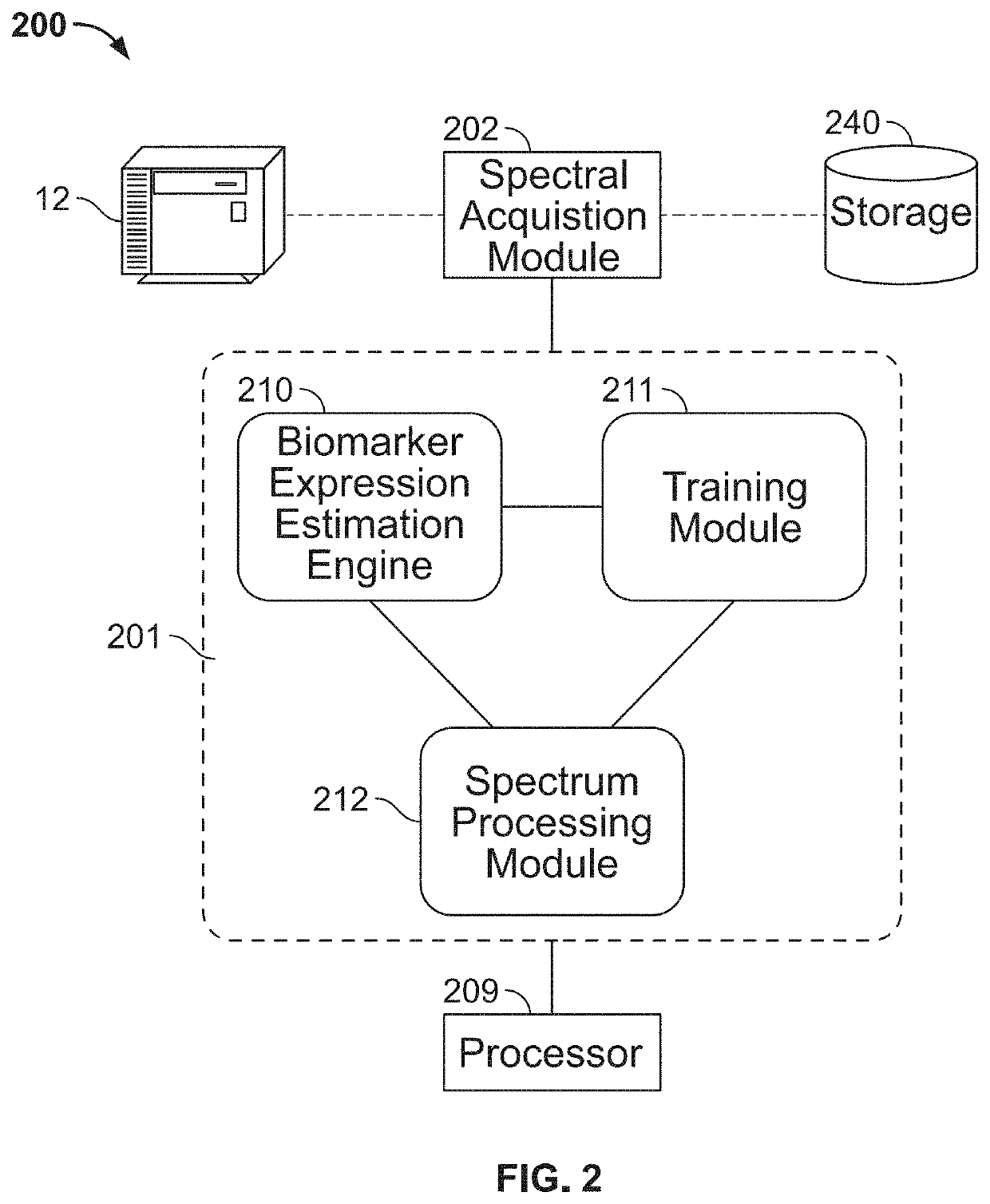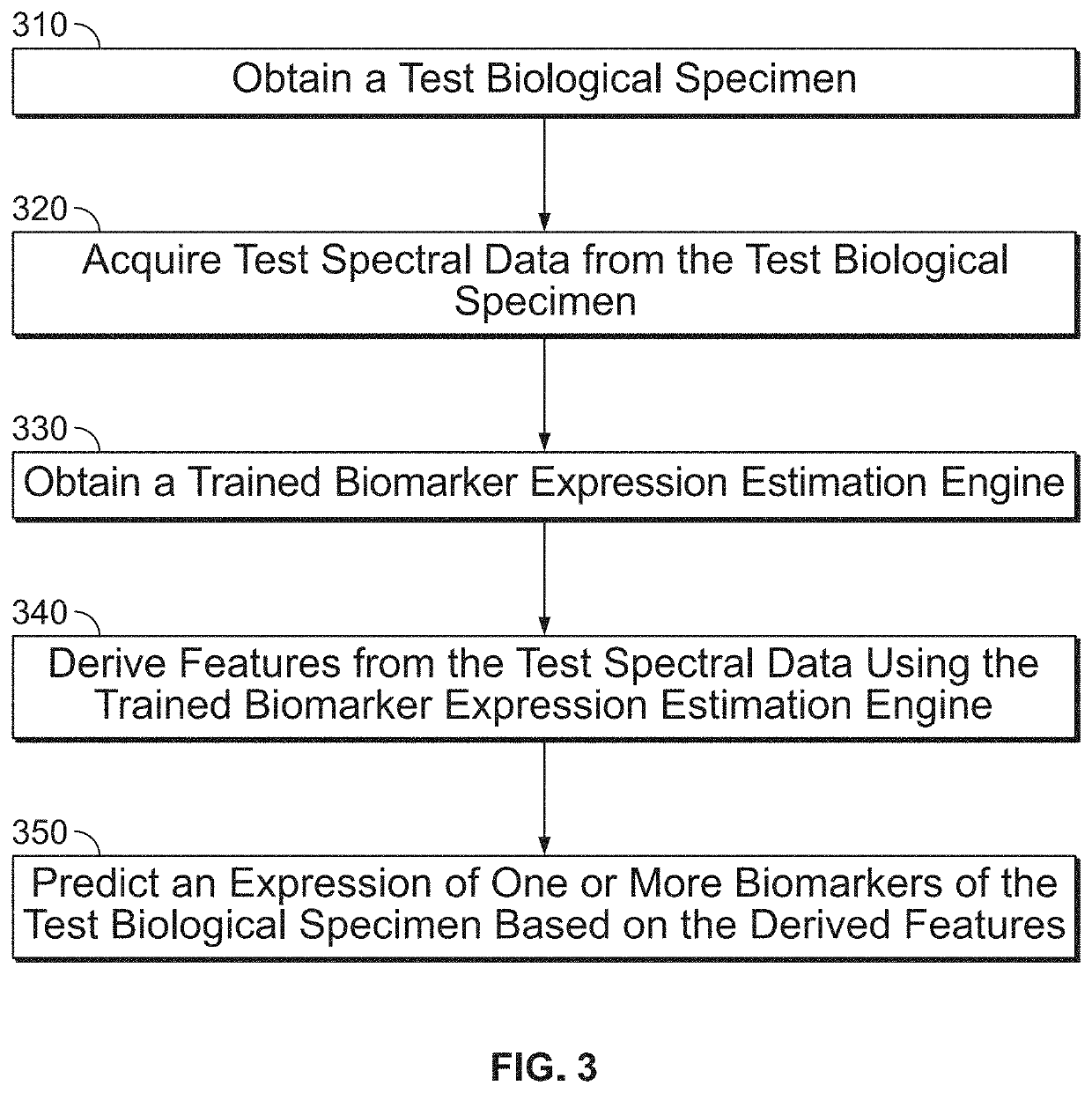Label-free assessment of biomarker expression with vibrational spectroscopy
a biomarker and vibration spectroscopy technology, applied in the direction of instruments, color/spectral property measurements, material analysis, etc., can solve the problems of cost and time consumption, and achieve the effect of poor unmasking
- Summary
- Abstract
- Description
- Claims
- Application Information
AI Technical Summary
Benefits of technology
Problems solved by technology
Method used
Image
Examples
example 1
[0196]Provided herewith is a comparison of the expression of three different biomarkers (BCL2, FOXP3, and ki67) versus fixation time. The tissue blocks for each fixation time were stained for each biomarker and the expression across the whole slide was quantified with an image analysis algorithm (e.g. one adapted to quantitatively determine expression levels for each stain, such as an automated algorithm which first segments the tissue on the slide and then determines regions of the tissue that were not of interest; the algorithm would then automatically determine whether the tissue was positive or negative for a given protein biomarker). Summary results in the form of box and whisker plots versus fixation time are displayed in FIGS. 9A, 9B, and 9C for BCL2, ki-67, and FOXP3, respectively. BCL2 and FOXP3 were found to be particularly labile and susceptible to improper fixation, as seen by their expression levels steadily increasing monotonically with fixation time.
[0197]On the other...
example 2
[0199]MirrIR microscope slides (Kevley Technologies, Chesterland, Ohio) for reflective infrared studies were used for the mid-IR spectra measurements. Four-micron serial sections of formalin-fixed paraffin-embedded (FFPE) tonsil tissue were placed on pre-treated MirrIR slides. Deparaffinization of tonsil tissue was performed manually according to OP2100-025. Briefly, after xylene steps slides were hydrated through descending grades of ethanol and then transferred in the VENTANA Cell Conditioning 1 (CC1) solution to the Rapid Antigen Retrieval (RAR) test-bed.
[0200]Antigen retrieval was performed in CC1 solution in the RAR chamber, which was pre-pressurized to 30 psi before heaters were turned on. The total heating time for any given experiment included 90 seconds ramp-up time and 2 minutes of cooling time. After the antigen retrieval step, the slides were gently washed in deionized water and air-dried at room temperature. Dried slides with intact tonsil tissues were used for the mid-...
example 3
n of Biomarker Expression Using a Trained Biomarker Expression Estimation Engine
[0204]Overview
[0205]This experiment utilized mid-infrared (mid-IR) spectroscopy to interrogate the vibrational state of molecules in histological tissue sections. In this work changes in the mid-IR spectra due to differentially retrieved tonsil tissues were studied and used to train a biomarker expression estimation engine. The identified shifts in the mid-IR spectra were correlated with immunohistochemical (IHC) staining for Ki-67 and C4d proteins.
[0206]Introduction
[0207]Mid infrared spectroscopy (mid-IR) is a powerful optical technique that probes the vibrational state of individual molecules in the tissue and is very sensitive to the conformational state of proteins. This extreme sensitivity makes mid-IR spectroscopy ideally suited for microscopy applications because the presence and even conformational state of endogenous and exogenous materials manifest through changes in the mid-IR absorption profi...
PUM
| Property | Measurement | Unit |
|---|---|---|
| thick | aaaaa | aaaaa |
| temperature | aaaaa | aaaaa |
| temperature | aaaaa | aaaaa |
Abstract
Description
Claims
Application Information
 Login to View More
Login to View More - R&D
- Intellectual Property
- Life Sciences
- Materials
- Tech Scout
- Unparalleled Data Quality
- Higher Quality Content
- 60% Fewer Hallucinations
Browse by: Latest US Patents, China's latest patents, Technical Efficacy Thesaurus, Application Domain, Technology Topic, Popular Technical Reports.
© 2025 PatSnap. All rights reserved.Legal|Privacy policy|Modern Slavery Act Transparency Statement|Sitemap|About US| Contact US: help@patsnap.com



